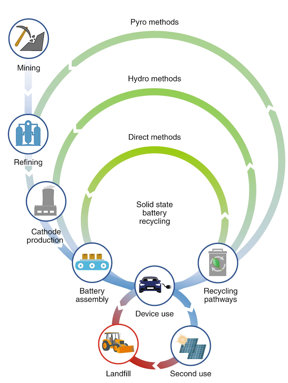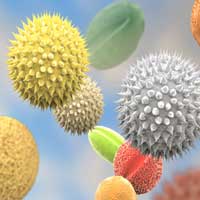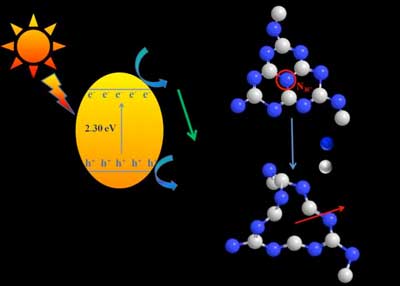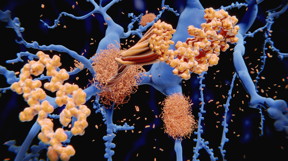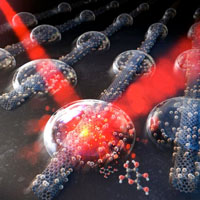Home > Press > Tokai scientists create the world's first electronic skin-based sensor for heatstroke detectionAbstract:Scientists at Tokai university have successfully fabricated the glue-free in situ heatstroke detection sensor using ultra-flexible freestanding nanosheet. The device which can continuously measure the skin sweat pH to predict the heatstroke have been reported...
Electric jolt to nanocarbon makes better water purifier
Mar 21, 2020 (Nanowerk News) Nagoya University scientists have developed a one-step fabrication process that improves the ability of nanocarbons to remove toxic heavy metal ions from water. The findings, published in the journal ACS Applied Nano Materials ("Liquid-Phase Plasma-Assisted in Situ Synthesis of Amino-Rich Nanocarbon for Transition Metal Ion...
Nanotechnology Now – Press Release: Pathways toward realizing the promise of all-solid-state batteries
Home > Press > Pathways toward realizing the promise of all-solid-state batteriesIllustration of various recycling methods with reference to direct battery recycling method proposed in solid state batteries. Image courtesy of Nature NanotechnologyAbstract:When it comes to batteries, there are always areas for improvement: the race is on to develop batteries...
Scientists transform ultra-tough pollen into flexible material
Mar 19, 2020 (Nanowerk News) Scientists at Nanyang Technological University, Singapore (NTU Singapore) have found a way to turn pollen, one of the hardest materials in the plant kingdom, into a soft and flexible material, with the potential to serve as 'building blocks' for the design of new categories of...
Nanotechnology Now – Press Release: 3D hierarchically porous nanostructured catalyst helps efficiently reduce CO2? This new catalyst will bring CO2 one step closer to serving as a sustainable energy source
Home > Press > 3D hierarchically porous nanostructured catalyst helps efficiently reduce CO2? This new catalyst will bring CO2 one step closer to serving as a sustainable energy sourceFabrication procedures of various gold nanostructures through proximity-field nanopatterning (PnP) and electroplating techniques. CREDIT Professor Seokwoo Jeon and Professor Jihun Oh,...
Novel approach to enhance performance of graphitic carbon nitride
Mar 17, 2020 (Nanowerk News) In a report published in NANO ("A Novel Approach to Synthesize Nitrogen-Deficient g-C3N4 for the Enhanced Photocatalytic Contaminant Degradation and Electrocatalytic Hydrogen Evolution"), scientists from the Jiangxi University of Science and Technology, Guangdong University of Petrochemical technology, Gannan Medical University and Nanchang Hangkong University in...
Nanotechnology Now – Press Release: Gold nanoparticles uncover amyloid fibrils
Home > Press > Gold nanoparticles uncover amyloid fibrilsAbstract:One of the characteristics of Alzheimer's disease is the presence of knot-like structures between brain cells. These are called "amyloid fibrils" and are formed by the notorious amyloid beta peptide and Tau protein, which are two of the most sought-after targets for...
Nanostructured rubber-like material with optimal properties could replace human tissue
Mar 16, 2020 (Nanowerk News) Researchers from Chalmers University of Technology, Sweden, have created a new, rubber-like material with a unique set of properties, which could act as a replacement for human tissue in medical procedures. The material has the potential to make a big difference to many people's lives....
Nanotechnology Now – Press Release: Show Me the Methane: Hyperspectral imaging and artificial intelligence combine to augment detection of methane leaks
Home > Press > Show Me the Methane: Hyperspectral imaging and artificial intelligence combine to augment detection of methane leaksAbstract:Though not as prevalent in the atmosphere as carbon dioxide, methane is a far more potent greenhouse gas. Occurring naturally as well as being manmade, methane is much shorter-lived than CO2,...
New study presents hygroscopic micro/nanolenses along carbon nanotube ion channels
Mar 13, 2020 (Nanowerk News) A novel technology, capable of analyzing nanomaterials in our daily lives with the use of common 'salt' has been developed. This allows various molecules to amplify up to hundreds of times the signals they produce in response to light, thereby making them very useful for...



